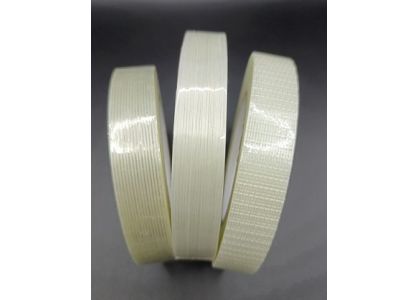
In evaluating shipping and packaging options, understanding filament tape price dynamics is crucial for cost-sensitive operations. Comparing filament tape vs strapping tape reveals trade-offs in material costs, labor, and equipment investment. Bulk procurement strategies, including filament tape wholesale agreements, can significantly reduce unit expenses, while working with a reliable filament tape supplier ensures consistent quality. Additionally, direct negotiations with filament tape manufacturers may unlock volume discounts and custom formulations. This analysis breaks down the total cost of ownership for filament tape, steel strapping, and polypropylene banding, providing procurement teams with data-driven insights to balance performance requirements and budget constraints.
To compare filament tape price against steel strapping and polypropylene banding, begin with per-unit material costs. Standard steel straps may cost $0.05–$0.10 per foot, while filament tape ranges from $0.02–$0.04 per foot at standard retail. When purchased filament tape wholesale, prices can drop further to $0.015 per foot. Equipment expenses also vary: manual steel strapping tools cost $200–$300, whereas a basic tape dispenser from your filament tape supplier can be under $50. For semi-automated lines, dedicated filament tape dispensers may require higher capital investment but deliver significant labor savings. Negotiations directly with filament tape manufacturers can bundle equipment and materials into comprehensive packages, reducing overall project costs.
Application speed and labor requirements directly affect total cost. Manual steel strapping demands two operators and takes approximately 30–45 seconds per pallet, whereas filament tape vs strapping tape can be applied by a single worker in 15–20 seconds. Tape applications minimize repetitive strain injuries and reduce training time. When using filament tape wholesale rolls with high-yield cores, line stoppages for roll changes decrease. Engaging with a filament tape supplier to optimize dispenser settings ensures consistent tension and placement, further boosting throughput. Overall, selecting filament tape over heavier strapping materials often translates into lower labor costs and faster cycle times.
Equipment downtime for maintenance influences the cost calculus between filament tape and alternative strapping methods. Steel strapping tools require periodic calibration and blade replacements, leading to an average of 2–3 minutes of downtime per shift. In contrast, filament tape vs strapping tape dispensers generally need only roller cleaning and adhesive residue removal, a process taking under a minute. Bulk purchases of filament tape wholesale often include replacement rollers and maintenance kits from your filament tape supplier. While filament tape manufacturers may offer extended warranties on dispensers, the simpler maintenance profile of tape systems minimizes unexpected stoppages, preserving line efficiency.
Waste disposal costs can tip the balance between filament tape and other materials. Steel strapping generates metal waste requiring specialized recycling, often incurring fees of $0.10 per pound. Conversely, filament tape vs strapping tape produces lightweight plastic waste, which may be accepted in standard cardboard recycling streams when properly separated. Purchasing filament tape wholesale reduces packaging waste and plastic cores. Many filament tape suppliers now offer take-back programs for cores and roll cores. Working directly with filament tape manufacturers can facilitate recycling initiatives, further lowering disposal expenses and enhancing sustainability profiles.
A comprehensive lifecycle cost analysis incorporates initial filament tape price, application labor, equipment depreciation, and disposal fees. Over a 12-month period, using filament tape for 100,000 pallets can cost $5,000 in materials, compared to $7,500 for steel strapping. Bulk orders through filament tape wholesale agreements can cut material costs by 20%. Maintenance downtime and labor savings with tape dispensers from your filament tape supplier add further benefits. Collaborating with filament tape manufacturers to track total usage and negotiate rebates ensures accurate forecasting. By modeling scenarios that include rework costs and warranty claims, procurement teams can quantify the real value of filament tape vs strapping tape decisions.
In fast-paced e-commerce fulfillment centers, filament tape often outperforms steel strapping in speed and cost-effectiveness. One global retailer reported a 15% reduction in packaging costs after switching to filament tape vs strapping tape, leveraging bulk buys via filament tape wholesale channels. The operations team partnered with their filament tape supplier to deploy automated dispensers, cutting labor hours by 25%. By sourcing directly from filament tape manufacturers, they secured custom branding on tape, enhancing unboxing experiences without raising material costs. These real-world examples highlight the competitive advantages of tape-based solutions over traditional strapping methods.
Effective negotiation can dramatically impact filament tape price and service terms. Approach your filament tape supplier with data on annual volume and application methods, and request tiered pricing for filament tape wholesale orders. When evaluating filament tape vs strapping tape, ask suppliers to include equipment discounts and training support in the contract. Direct discussions with filament tape manufacturers may unlock private-label options or co-development of specialized tapes. Emphasize long-term partnerships and forecasted demand to secure favorable terms on filament tape, enhancing both cost predictability and supply chain resilience.
To finalize a procurement decision, develop a clear ROI framework comparing filament tape price scenarios. Model the impact of filament tape vs strapping tape on total landed costs, incorporating material, labor, maintenance, and disposal. Explore filament tape wholesale options to maximize savings and stabilize unit pricing. Engage a dedicated filament tape supplier to validate assumptions and provide real-time usage data. With this structured analysis, procurement teams can confidently choose the optimal packaging solution that aligns performance with budgetary goals.